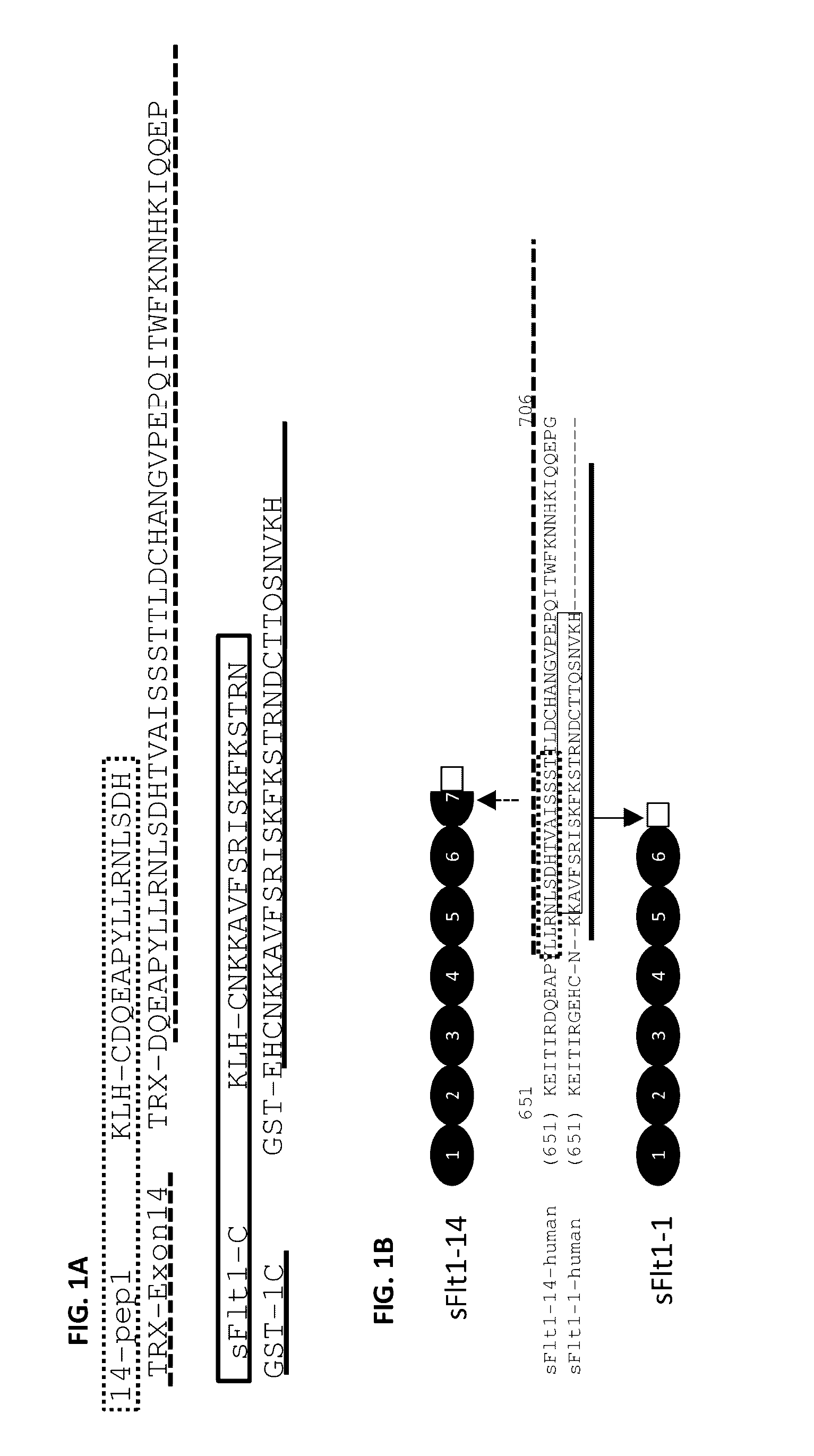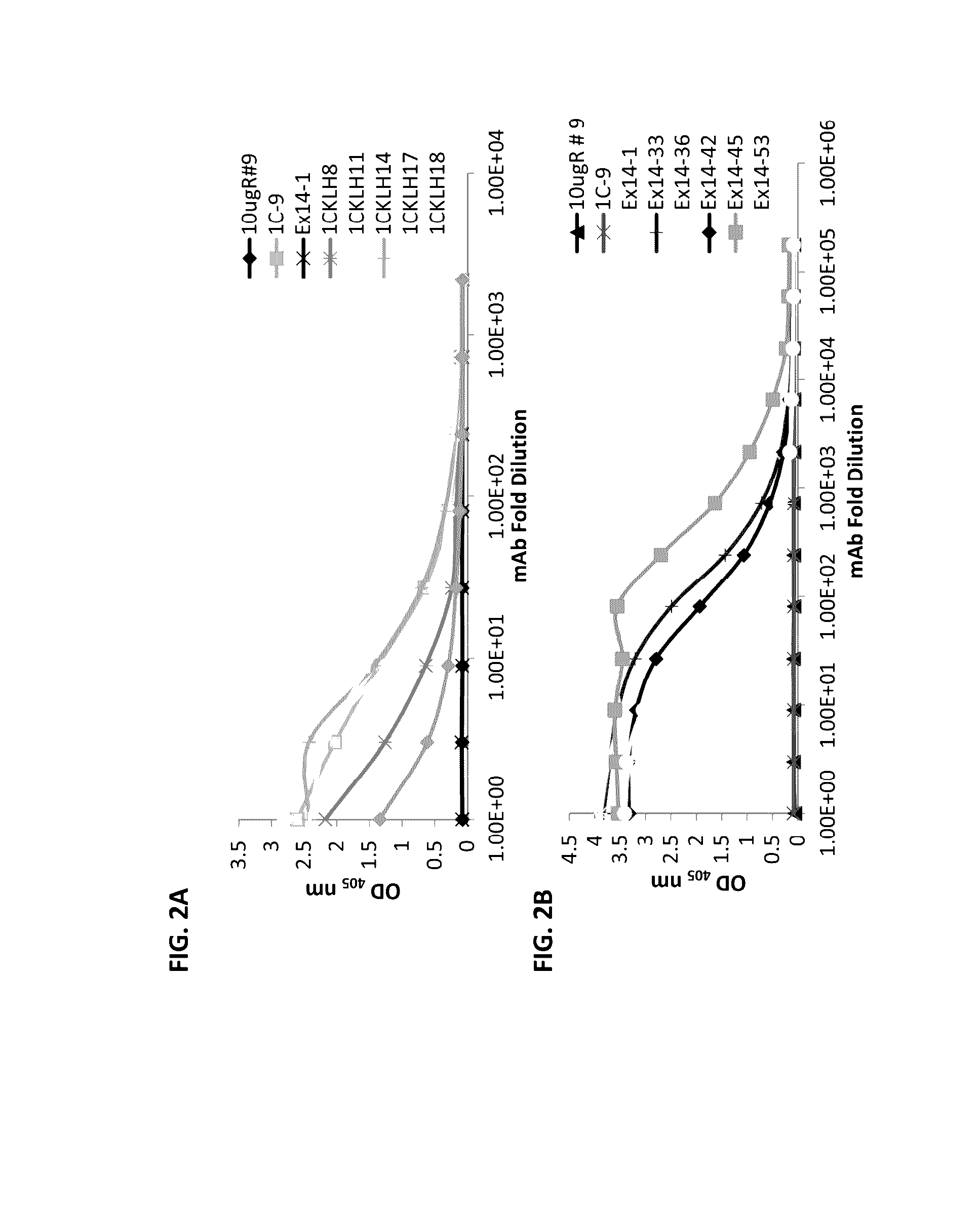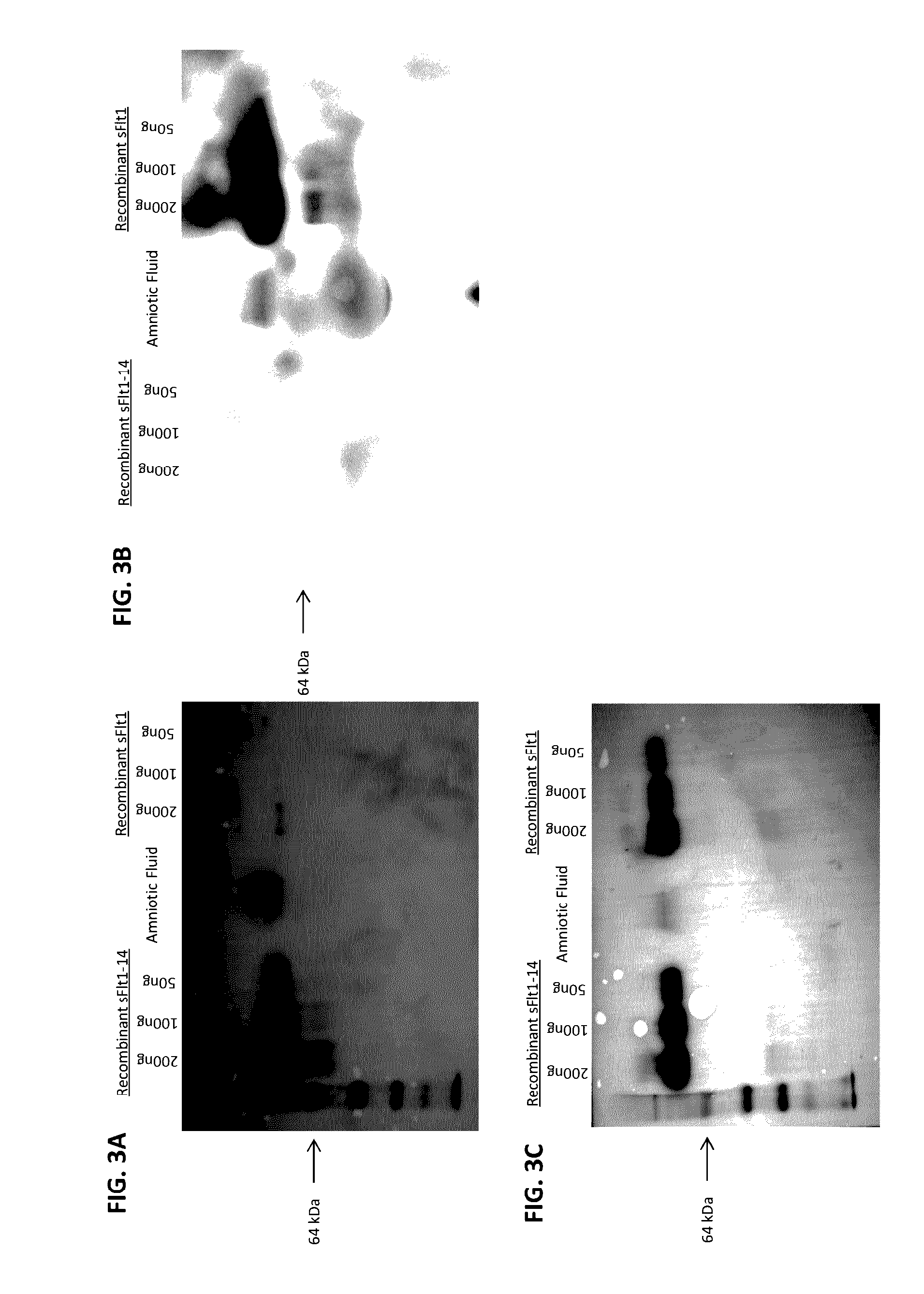Isoform specific soluble fms-like tyrosine kinase (SFLT) binding agents and uses thereof
- Summary
- Abstract
- Description
- Claims
- Application Information
AI Technical Summary
Benefits of technology
Problems solved by technology
Method used
Image
Examples
example 1
Generation of sFlt and C-Terminal Peptides
[0089]Human sFlt1-1 and sFlt1-14 amino acid and protein sequences were determined from GenBank and sequences are provided. Sequences were aligned using VectorNTI (Invitrogen) and unique C-terminal domains were determined by assessing sequence homology (FIG. 1). The sFlt1-1 and sFlt1-14 genes were codon optimized for expression in CHO cells and complete proteins were isolated following expression for 7 days in culture. The sFlt1-14 (14-pep1) and sFlt1-1 (sFlt1-C) peptides were synthesized by New England Peptide and chemically conjugated to KLH through an N-terminal cysteine on each peptide. Additional c-terminal-specific peptides (TRX-Exon14 and GST-1C; FIG. 1) were bacterially expressed and purified for screening ELISAs. All proteins were quantified by measuring optical density at 280 nm in addition to a standard Bradford assay, and purity was analyzed by Coomassie stained SDS-PAGE.
example 2
Generation of Total sFIt1 and Isoform-Specific Monoclonal Antibodies
[0090]CD-1 wild type mice or HuMAb mice were immunized with full-length sFlt1, sFIt1-C, 14-pep1 or 1C-KLH-18. The antigen was administered in combination with the Sigma adjuvant system and mouse sera responses and subsequent hybridoma cultures following splenic fusion were monitored by enzyme linked immunosorbent assay (ELISA) to the full-length sFIt1-1 and sFIt1-14 (FIG. 1B) or isoform-specific peptides GST-1C and TRX-Exon14 (FIG. 1). Mice that were determined to have a strong immune response to the relevant antigen were selected for splenic B cell isolation, which were fused to mouse myeloma cells using standard spleen cell fusion methods. Clonal hybridomas were generated and screened using ELISA for production of mAbs reactive to total sFlt, sFlt1-1 or sFlt1-14. This method yielded 359 positive murine clones. Of the 359 total positive murine clones, several had specific activity only to sFlt1-1 (FIG. 2A) or sFlt1...
example 3
Antibody Characterization
[0091]Antibody Heavy Chain Sequence Determination
[0092]RNA was extracted from the positive hybridoma clones and nucleotide sequences of the heavy chain of the reactive antibody determined. RNA was purified from all hybridomas and RT-PCR performed using a reverse oligonucleotide complimentary to the heavy chain constant region and a forward oligonucleotide cocktail designed to anneal to all heavy chain genes expressed in the mouse. PCR products were sequenced and those with unique CDR regions were scaled forward (the sequences for antibodies selected for final ELISA assays are included).
[0093]ELISA
[0094]To determine reactivity of unique antibodies with sFlt1-1 and sFlt1-14, ELISA was employed. As described above, TRX-Exon14 and GST-1C peptides were expressed and purified from bacteria. ELISA plates were coated with either GST-1C (FIG. 2A) or TRX-Exon14 (FIG. 2B), blocked with BSA and a series of dilutions of each hybridoma supernatant containing mAb was incub...
PUM
| Property | Measurement | Unit |
|---|---|---|
| Time | aaaaa | aaaaa |
| Time | aaaaa | aaaaa |
| Time | aaaaa | aaaaa |
Abstract
Description
Claims
Application Information
 Login to View More
Login to View More - R&D
- Intellectual Property
- Life Sciences
- Materials
- Tech Scout
- Unparalleled Data Quality
- Higher Quality Content
- 60% Fewer Hallucinations
Browse by: Latest US Patents, China's latest patents, Technical Efficacy Thesaurus, Application Domain, Technology Topic, Popular Technical Reports.
© 2025 PatSnap. All rights reserved.Legal|Privacy policy|Modern Slavery Act Transparency Statement|Sitemap|About US| Contact US: help@patsnap.com



